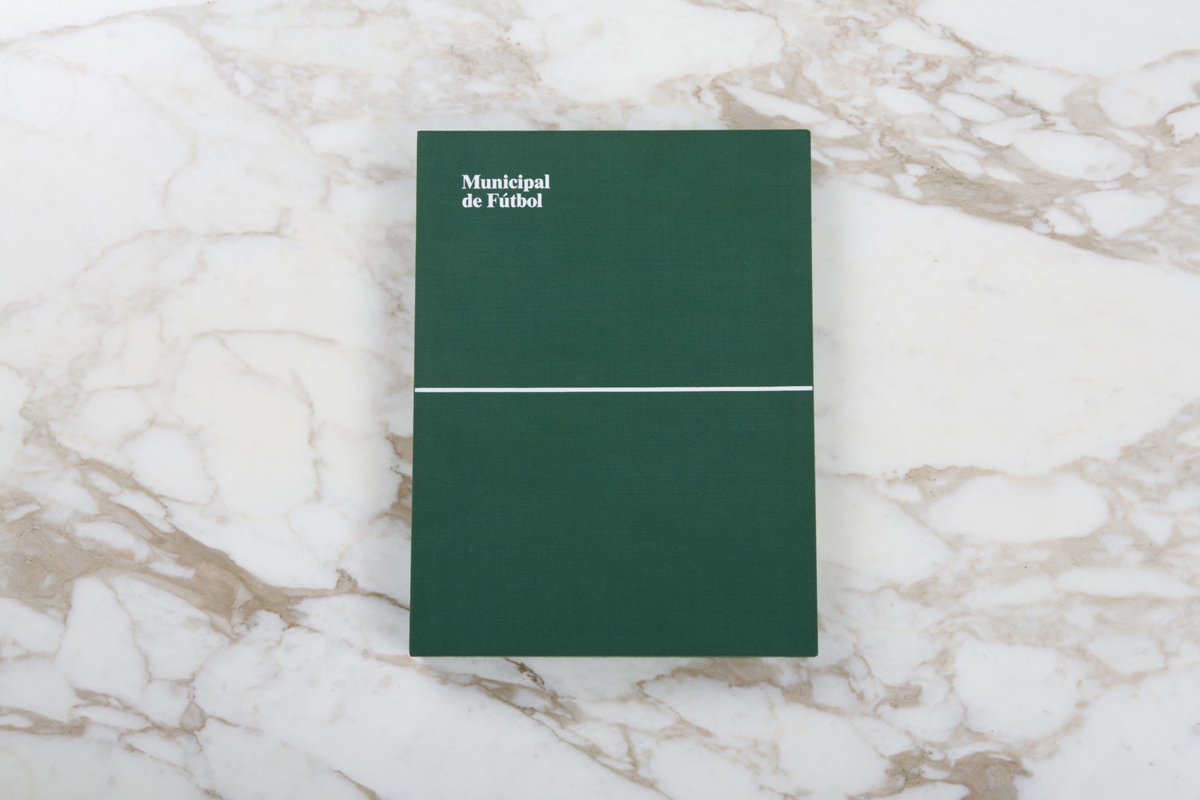
Essays by Jennifer Doyle. Photography by Michael Wells.
Municipal de Fútbol
Hardcover/boxed, 192 pp., offset 4/1, 260 x 350 x 40 mm
two books, one poster, nine artist lithographs, and a fútbol jersey, in cloth box
English and Spanish
Edition of 1000
ISBN 978-0-9816325-0-6
ISBN 978-0-9816325-1-3
ISBN 978-0-9816325-2-0
Published by Christoph Keller Editions, Textfield
$80.00 $40.00 ·
Distributed in North America by
Distributed Art Publishers
Municipal de Fútbol is a collaborative edition about amateur soccer in Los Angeles—the everyday experience of playing in pick-up games, weekend and night park leagues. Jennifer Doyle, a contributor to frieze and author of Sex Objects: Art and the Dialectics of Desire, has contributed two essays to the books, both with Spanish translation. Housed in an embossed green clothbound box with black ribbon pulls, the edition includes two clothbound books (one of which studies the game as it is played throughout Los Angeles, on hijacked baseball fields, back lots and public squares, and the other of which focuses on one field in particular, the ultra-scrappy and always animated Lafayette Park); one poster; artist lithographs by As-Found, Roderick Buchanan, Mari Eastman, General Idea, Jakob Kolding, Jonathan Monk, Arthur Ou, Peter Piller and Michael Wells; and a European National team adidas fútbol jersey with a “Municipal de Fútbol/Los Angeles Recreation and Parks” embroidered patch and a reflective silk-screened number. The edition is designed by Jonathan Maghen and photography is by Michael Wells.
“Fútbol bubbles up from the ground. It rains down on parks and leaks through walls. It rises like an irrepressible tide, and recedes only when everybody has to go earn some money for themselves and their families. Nobody playing here thinks it’s going to make them rich. Or famoso. It is what happens instead of work.” — Jennifer Doyle
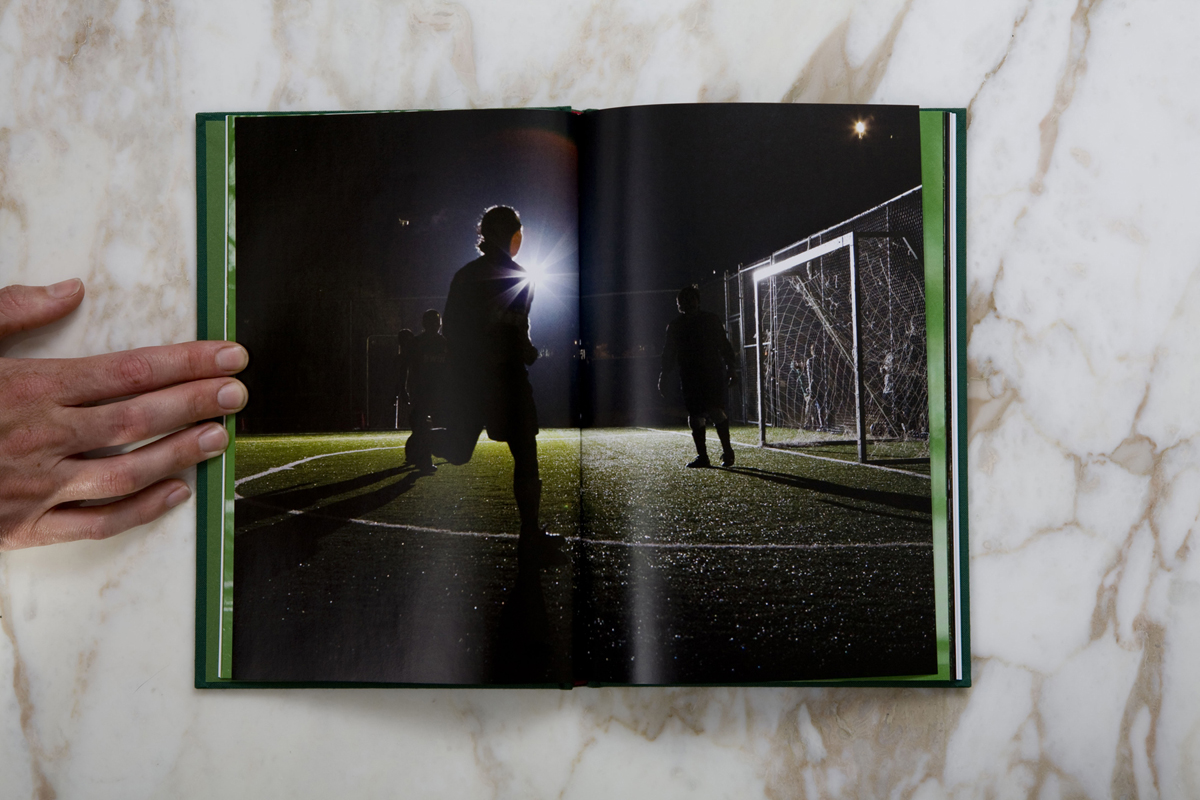
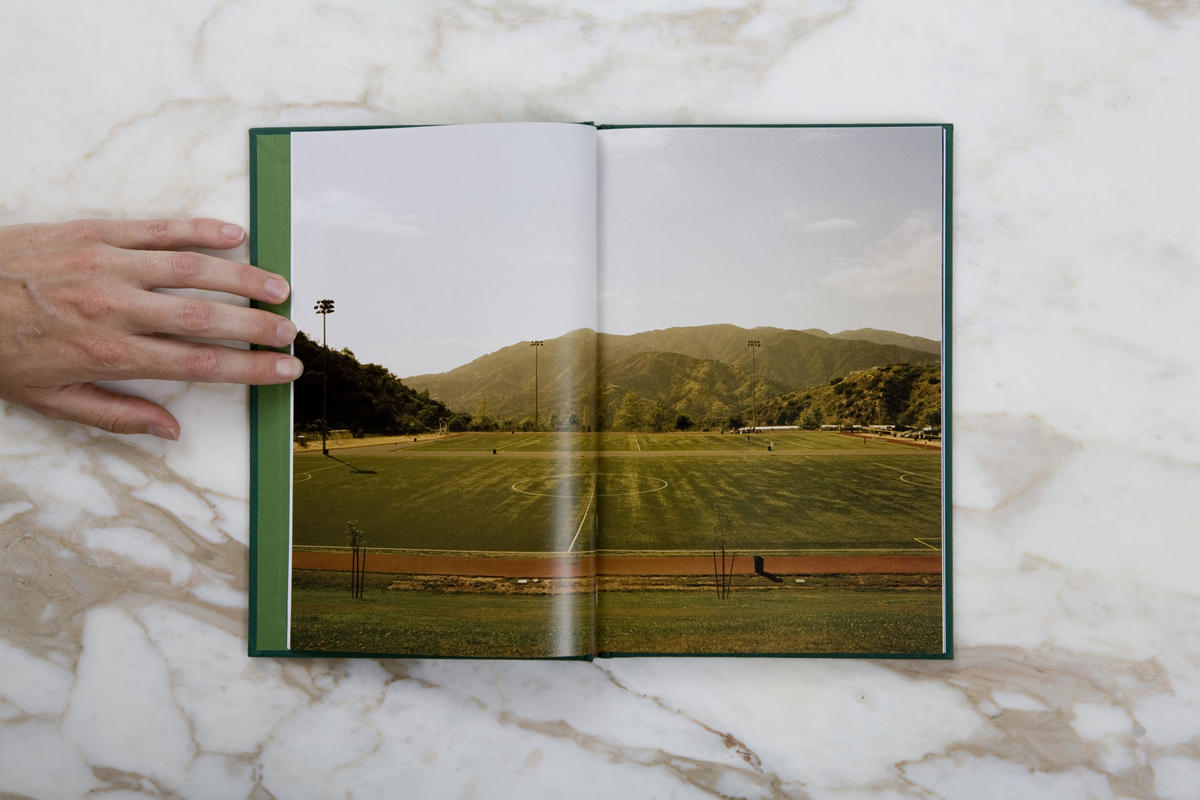
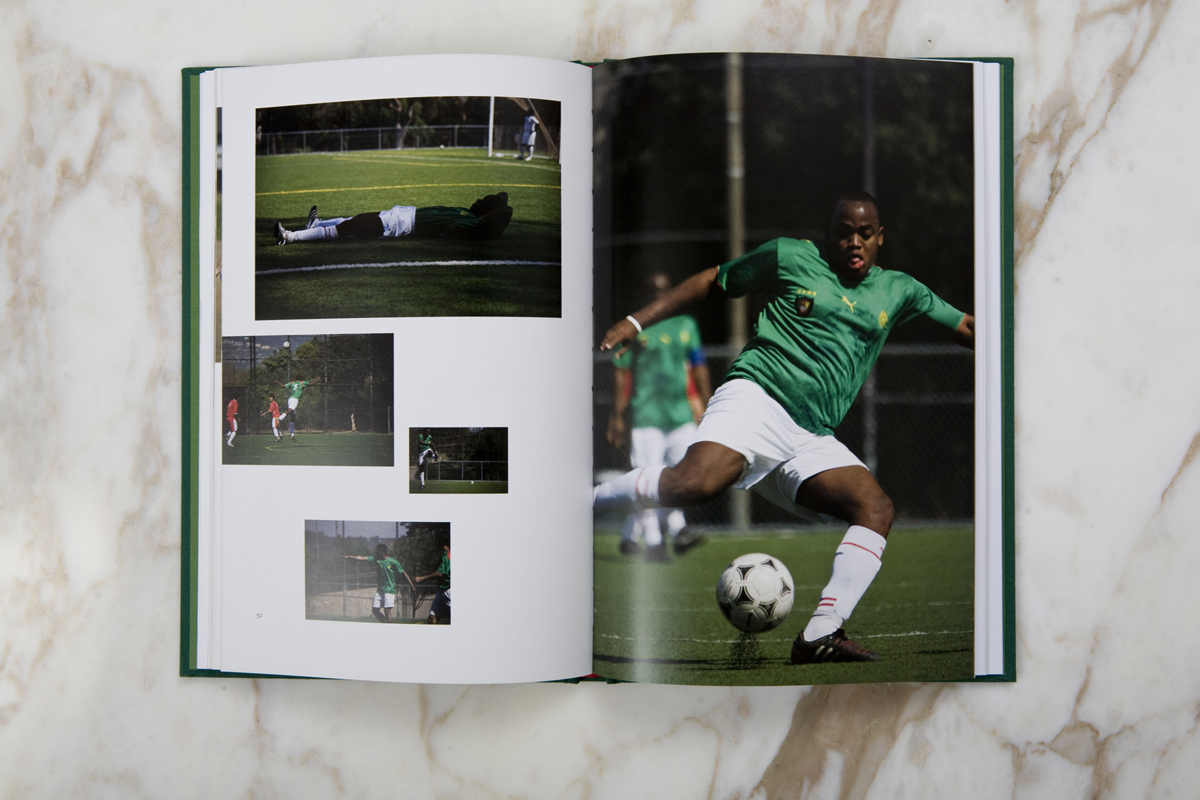
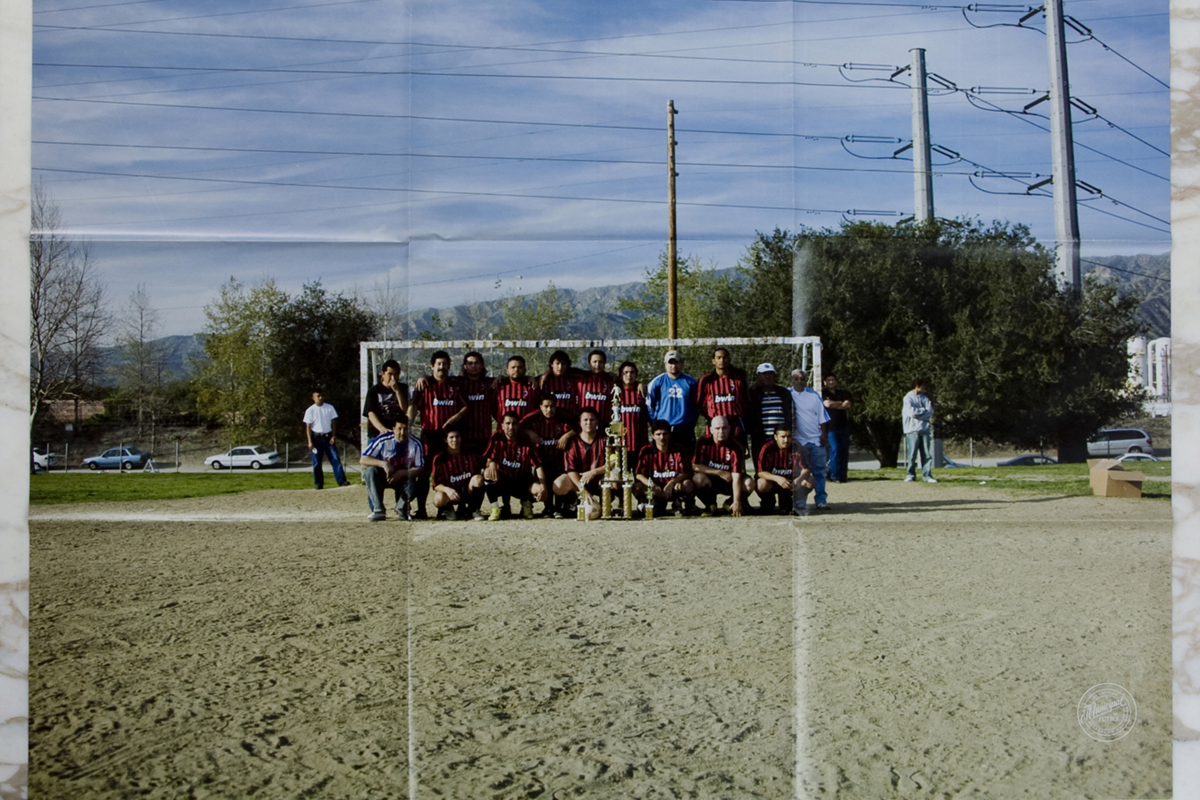
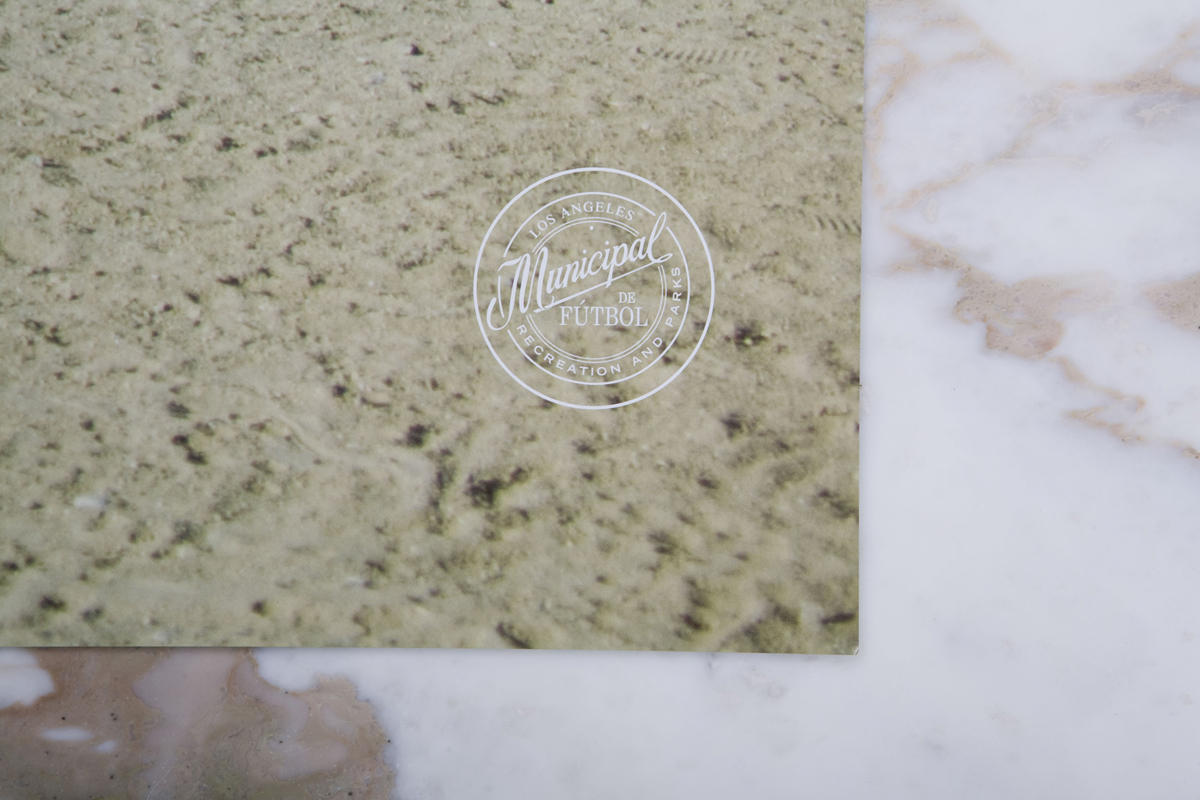
AA Bronson, Art, Arthur Ou, As-Found, Christoph Keller Editions, Criticism, Culture, DAP, Distribution, Fashion, General Idea, Jakob Kolding, Jennifer Doyle, Jonathan Maghen, Jonathan Monk, Mari Eastman, Michael Wells, Peter Piller, Roderick Buchanan, Sandy Yang, Sport, Textfield, Typography
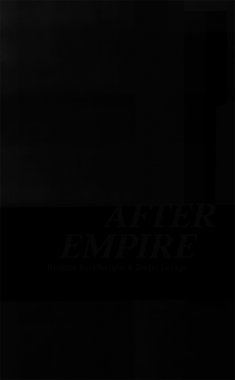
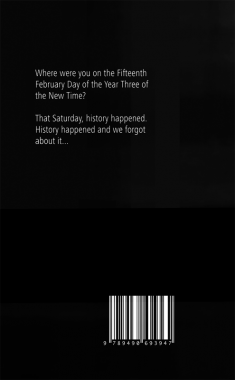
Herman Asselberghs and Dieter Lesage, After Empire
Softcover, 256 pp., offset 1/1, 110 x 180 mm
Edition of 2000
ISBN 978-94-9069-394-7
Published by MER. Paper Kunsthalle
$20.00 ·
After Empire is published on the occasion of the group show ‘Blijven Kijken’, an exhibition curated by Pieter Van Bogaert at M-Museum on (dis)appearing images and the boundaries of representation. Central in the exhibition is the 2010 video After Empire by Herman Asselberghs. This video is a tentative reflection on positive forms of collective resistance against war as well as emancipatory representations concerned with it. This publication considers a possible alternative for an iconic image drawn from our collective memory: a hijacked plane hitting the second tower of the WTC in 2001, New York. The book proposes an alternative for our collective history: the 15th of February 2003. On that day 30 million citizens across the planet marched against the unilateral decision by the American government to start a pre-emptive war against Iraq under the auspices of “the war on terrorism”. 2/15 was the greatest peace demonstration since the Vietnam war and probably the biggest protest march ever to take place. The war did happen, but this world day of resistance could very well mark the beginning of the 21st century. 2/15 instead of 9/11: a key date in the writing of a history of global contestation in the struggle between two superpowers: the United States against public opinion worldwide.
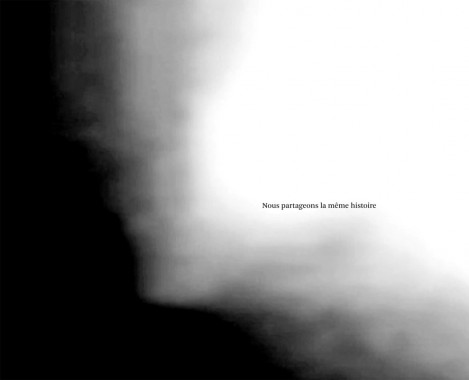
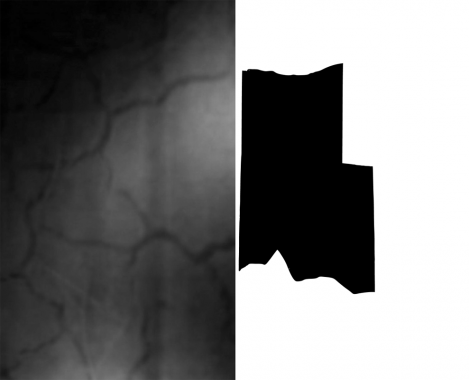
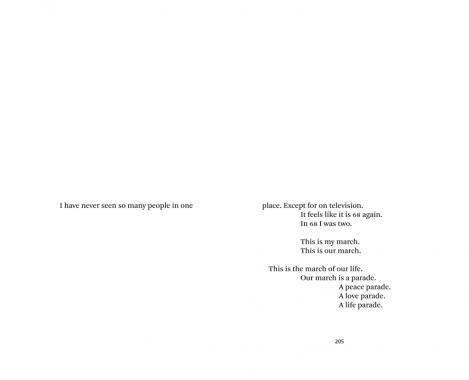
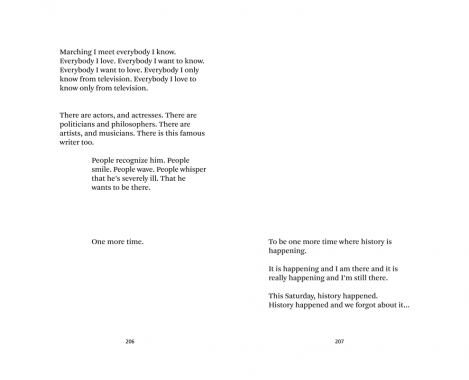
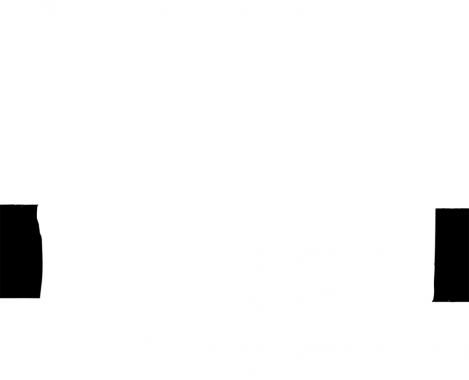
Art, Criticism, Dieter Lesage, Distribution, Herman Asselberghs, Iraq, M-Museum, MER. Paper Kunsthalle, Philosophy, Pieter Van Bogaert, Politics
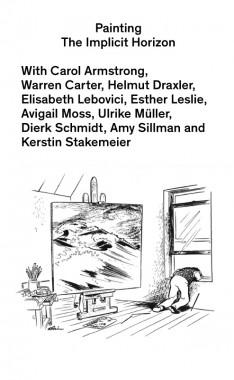
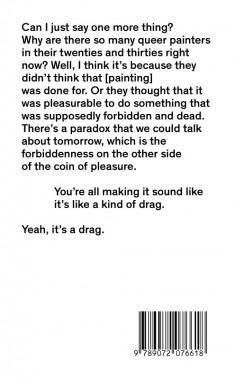
Avigail Moss and Kerstin Stakemeier, Painting — The Implicit Horizon
Softcover, 192 pp., offset 1/1, 110 x 140 mm
Edition of 500
ISBN 978-90-72076-61-8
Published by Jan van Eyck Academie
$11.00 · out of stock
Painting — The Implicit Horizon documents a symposium which took place at the Jan van Eyck Academie in Maastricht, the Netherlands. The book presents essays and transcripts of discussions between European and American artists, art historians, and critics who have looked at some of the ways painting has been conceived of in the eras after Conceptual Art. Addressing ideas of production and consumption, critiques of the end of art, issues of age, accomplishment, and the myth of the painter, the book posits that painting, as a working practice as well as a historical referent, serves as an implicit horizon or limit condition for other media.
“Jimson lives in a ramshackle houseboat on the Thames river, where he reminisces about the days when the state collected his paintings, hides from the police (who pursue him for his minor infractions and debts) and schemes about how to extract money from various wealthy patrons. That is, his struggles are conceptual, material and financial and always involve a race against time and an acknowledgement of his own limitations even in light of his successes. After a series of roguish scrapes, he finally receives a retrospective at Tate Britain: a triumph that does little to alleviate his destitution. But the film’s dénouement comes when Jimson paints a “monument to England”: a giant mural representing “The last Judgment” on the side of a bombed-out church aided by a cadre of voluntary art student assistants who he keeps remunerated in cups of coffee. The film ends when Jimson — threatened by council developers looking to capitalize on the land — voluntarily bulldozes his mural in advance of the city bureaucrats and sails off down the Thames in search of a new horizon: perhaps another, larger wall (or a further expansion of painting as such).”
CONTRIBUTORS
Carol Armstrong, Warren Carter, Helmut Draxler, Kerstin Stakemeier, Elisabeth Lebovici, Esther Leslie, Avigail Moss, Ulrike Müller, Dierk Schmidt, and Amy Sillman.
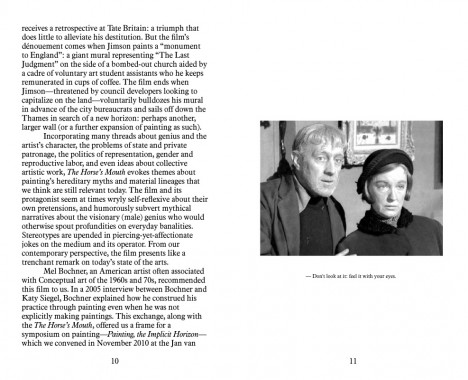
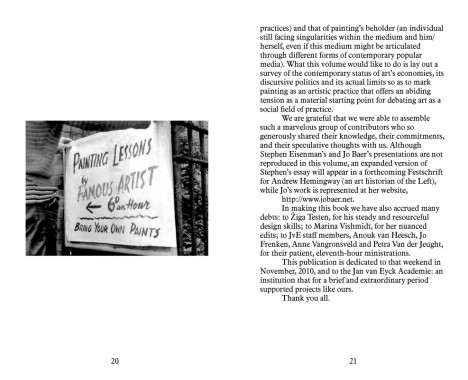
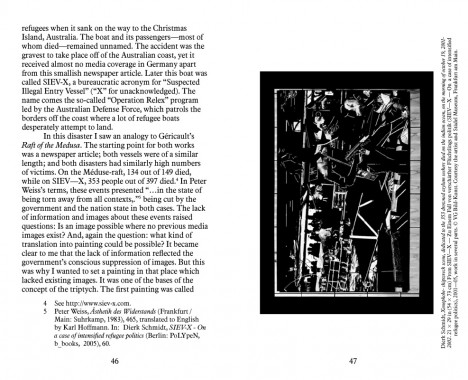
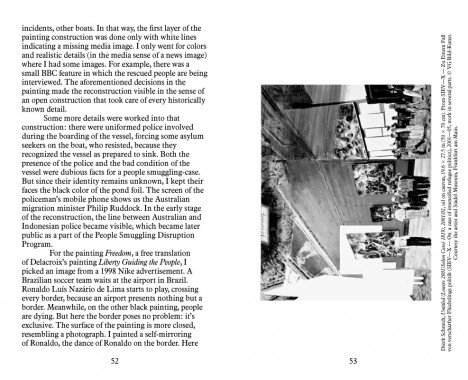
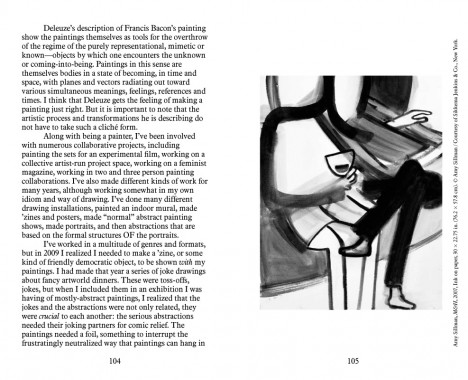
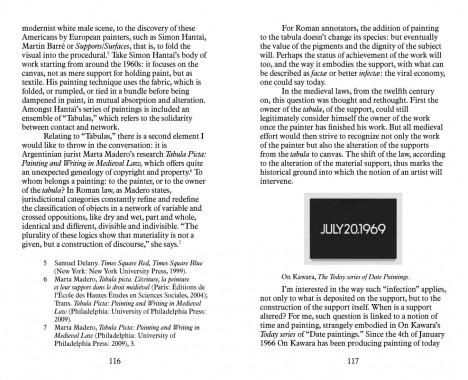
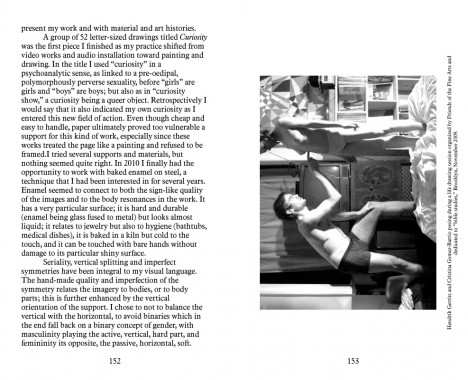
Alan Smart, Amy Sillman, Annet Perry-Schoot, Anouk van Heesch, Art, Avigail Moss, Carol Armstrong, Criticism, Culture, Daniel Brustlein, Dierk Schmidt, Distribution, Elisabeth Lebovici, Esther Leslie, Fox Hysen, Gully Jimson, Helmut Draxler, Jan van Eyck Academie, Jo Baer, John Bratby, Katja Diefenbach, Kerstin Stakemeier, Marina Vishmidt, Minika Baer, Painting, Ronald Neame, Sir Alec Guinness, Stephen Eisenman, Theory, Ulrike Müller, Warren Carter, Žiga Testen
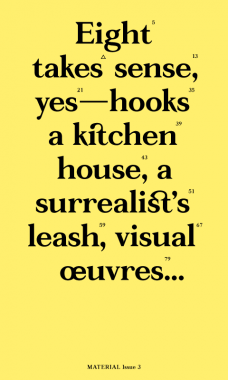
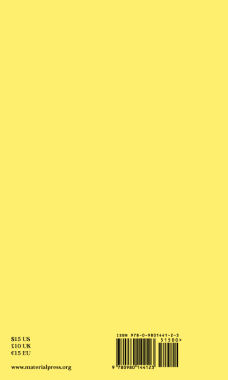
Ginny Cook and Kim Schoen, MATERIAL 3
Softcover, 96 pp. + insert, offset 2/1, 160 x 270 mm
Edition of 500
ISBN 978-0-9801441-2-3
Published by MATERIAL Press
$15.00 ·
MATERIAL exists as a platform for the artist’s voice. Each issue brings together a different group of artists who write, as well as a new collaboration with a graphic designer. During the production of this third issue, our designer Zak Jensen put forth the idea of concatenation — the act of linking together, or the state of being joined (
It was caused by an improbable concatenation of circumstances) (there was a connection between eating that pickle and having that nightmare)
(the joining of hands around the table).
Concatenation (c.1600, from L.L. concatenatus, pp. of concatenare “to link together,” from com- “together”+ catenare, from catena “a chain”) seemed an appropriate word for our editorial method. An unlikely assemblage of texts becomes connected through this process; uncanny linkages emerge. Wyeth appears twice. Performances interact. In this issue: voices that duel, voices that parrot, voices that hypothesize, translate, and meditate, voices that speak simultaneously. As Roland Barthes writes, we have assembled these textual events, as “pleasure in pieces; language in pieces; culture in pieces,” to build upon one another into something new.*
*Roland Barthes, The Pleasure of the Text, trans. Richard Miller (New York: Hill and Wang, 1975), p. 51
CONTRIBUTORS
Farrah Karapetian, Paul Zelevansky, Renee Petropoulous, Nate Harrison, James Welling, Natalie Häusler, Harold Abramowitz, Shana Lutker Stephanie Taylor, Alice Könitz, Frank Chang, and Emily Mast.
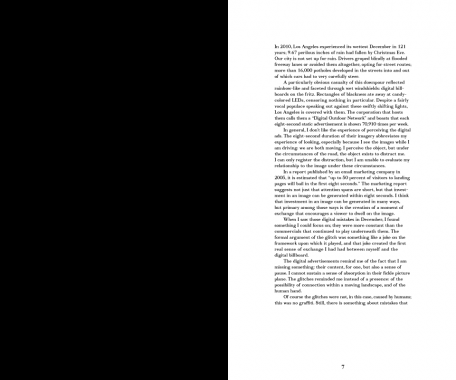
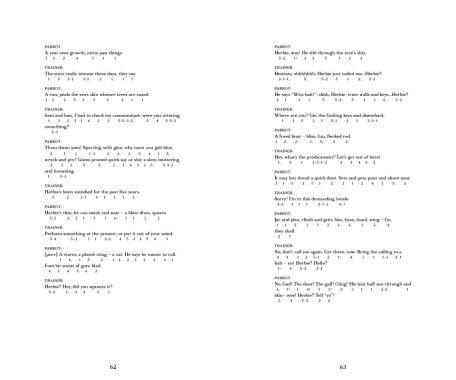
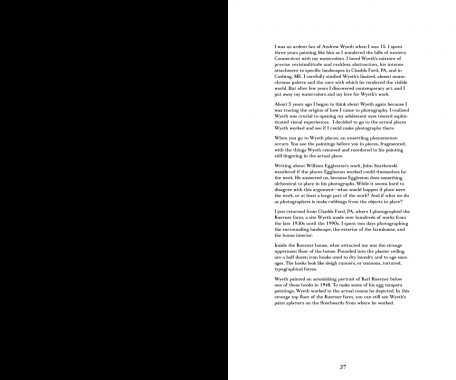
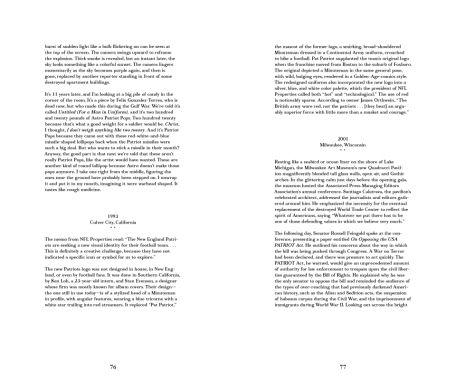
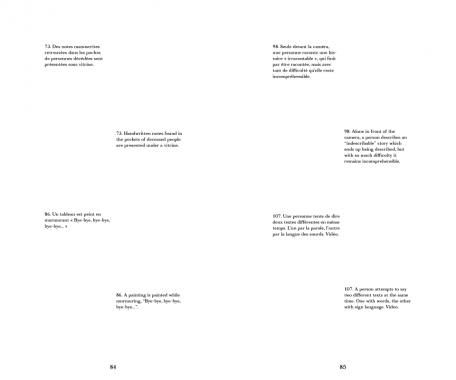
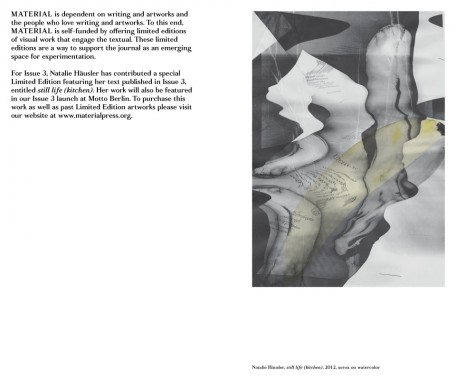
Alice Konitz, Andrew Wyeth, Art, Catherine Guiral, Concatenare, Criticism, Daniel Lucas, Design, Distribution, Dorit Cypis, Emily Mast, Farrah Karapetian, Frank Chang, Ginny Cook, Harold Abramowitz, James Welling, John Stezaker, Jonathan Miles, Kim Schoen, MATERIAL Press, Natalie Häusler, Nate Harrison, Olivier Richon, Paul Zelevansky, Quentin Walesch, Renee Petropoulous, Richard Miller, Roland Barthes, Shana Lutker, Stephanie Taylor, Theory, Thomas Lawson, Typecraft Wood & Jones, Typography, Wendy Schoen, Zak Jensen
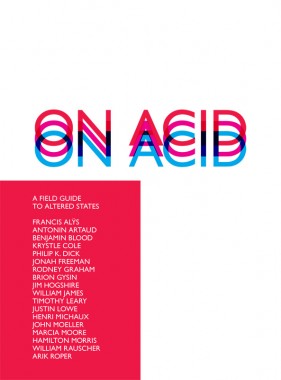
William Rauscher and John Moeller, On Acid
A Field Guide to Altered States
Softcover, 100 pp., offset 4/3, 200 x 265 mm
Edition of 1000
ISBN 978-0-615-53398-8
Published by CCC
$15.00 ·
On Acid presents a radically subjective re-edit of the history of drug experience, following the emergence of drugs as a technology and modernity’s conflicted obsessions with altered states. Tracing a path beginning with philosopher Benjamin Blood’s 1874 pamphlet ‘The Anesthetic Revelation and the Gist of Philosophy’ which declares the existence of a ‘majesty and supremacy unspeakable’ observable only after being dosed by nitrous oxide,
On Acid assembles texts and images that draw a line connecting archival works by William James, Antonin Artaud, Timothy Leary, and various modernist explorers, to the practice of contemporary artists such as Rodney Graham, Francis Alÿs, Jonah Freeman and Justin Lowe. Removed from the familiar cultural contexts of Haight-Ashbury and Grateful Dead psychedelia,
On Acid is in itself an experimental program, a recursive acidic process that mirrors the deconstructive relations to counterculture cultivated in contemporary art. The book concludes with a series of new conversations with Freeman and Lowe, Hamilton Morris and Arik Roper.
TEXTS
Francis Alys, Antonin Artaud, Benjamin Blood, Philip K. Dick, Rodney Graham, Brion Gysin, Dr. Albert Hofmann, Jim Hogshire, Aldous Huxley, International Federation for Internal Freedom, William James, Timothy Leary, Marcia Moore, William Rauscher, Alan Watts.
IMAGES
Brian Aldiss, Francis Alys, Carol Bove, Syd Barrett, Mathieu Briand, Krystle Cole, Jonah Freeman and Justin Lowe, Allen Ginsberg, John Giorno, Rodney Graham, Brion Gysin, Carsten Holler, Henri Michaux, John Moeller, Arik Roper, Sandoz Laboratories, Ettore Sottsass, Klaus Weber.
INTERVIEWS
Justin Lowe and Jonah Freeman, Hamilton Morris, Arik Roper.
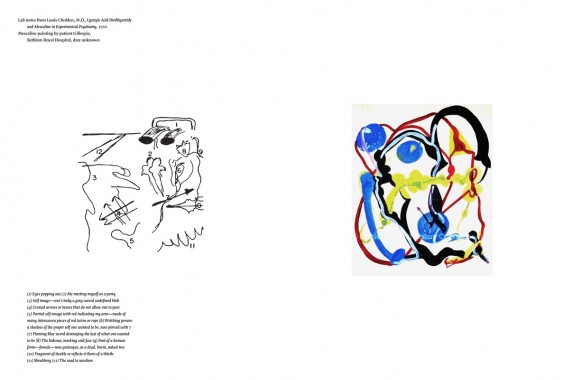
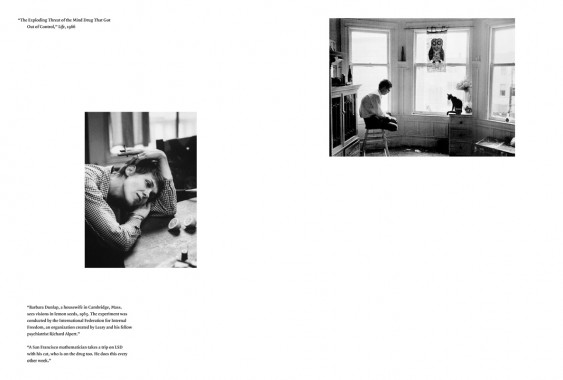
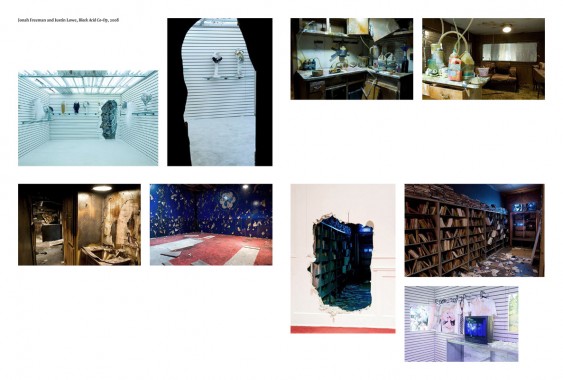
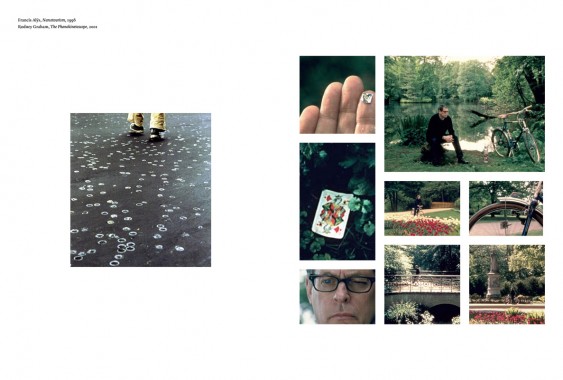
Alan Watts, Aldous Huxley, Allen Ginsberg, Antonin Artaud, Arik Roper, Art, Benjamin Blood, Brian Aldiss, Brion Gysin, Carol Bove, Carsten Höller, CCC, Criticism, Culture, Distribution, Dr. Albert Hofmann, Ettore Sottsass, Francis Alys, Hamilton Morris, Henri Michaux, International Federation for Internal Freedom, Jim Hogshire, John Giorno, John Moeller, Jonah Freeman, Justin Lowe, Klaus Weber, Krystle Cole, Marcia Moore, Mathieu Briand, Philip K Dick, Philosophy, Psychedelia, Rodney Graham, Sandoz Laboratories, Syd Barrett, Theory, Timothy Leary, William James, William Rauscher
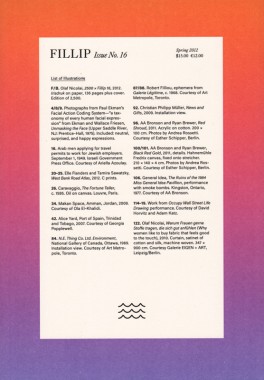
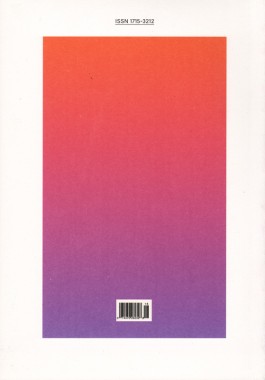
fillip 16
Softcover, 136 pp., offset [split fountain], 170 x 245 mm
Softcover, 32 pp., offset 1/1, 140 x 210 mm [Ariella Azoulay booklet]
Edition of 2500
ISSN 1715-3212
ISBN 978-0-9868326-6-6
ISBN 979-0-9868326-8-0 [Ariella Azoulay booklet]
Published by Fillip
$15.00 ·
Fillip is a publication of art, culture, and ideas released three times a year.
Fillip 16 continues the ongoing series of texts entitled Apparatus, Capture, Trace, and includes a booklet by Ariella Azoulay, Different Ways Not to Say Deportation.
The issue also continues essays from the Intangible Economies series, and focuses on the multifarious forms of exchange fueled by affect and desire. Intangible Economies speculatively investigates the fundamental role these affective transactions play in modes of representation and, accordingly, in cultural production.
1. Patricia Reed, Co-autonomous Ethics and the Production of Misunderstanding
2. Ola El-Khalidi and Diala Khasawnih, Gastronomica Makan
3. Christopher Cozier and Clair Tancons, No More than a Backyard on a Small Island
4. Vincent Bonin, Here, Bad News Always Arrives Too Late
5. Jon Davies, The Masculine Mystique
6. Philip Monk, Crises (and Coping) in the Work of General Idea
7. David Horvitz and Adam Katz, Occupy Wall Street Life Drawing
AA Bronson, Adam Katz, Alice Yard, Andrea Rossetti, Antonia Hirsch, Ariella Azoulay, Art, Christian Phillip Muller, Christopher Cozier, Clair Tancons, Criticism, David Horvitz, Diala Khasawnih, Distribution, Elle Flanders, Esther Schipper, Fillip, General Idea, Georgia Popplewell, Jon Davies, Kate Steinmann, Kristina Lee Podesva, Ola El-Khalidi, Olaf Nicolai, Patricia Reed, Paul Ekman, Philip Monk, Robert Filliou, Ryan Brewer, Tamira Sawatzky, Theory, Vincent Bonin, Wallace Friesen
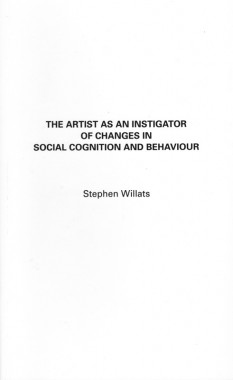
Stephen Willats, The Artist as an Instigator of Changes in Social Cognition and Behaviour
Softcover, 96 pp., offset 2/1, 130 x 210 mm
Edition of 1000
ISBN 978-0-9562605-6-7
Published by Occasional Papers
$18.00 · out of stock
Stephen Willats’ major essay The Artist as an Instigator of Changes in Social Cognition and Behaviour is re-issued for the first time by Occasional Papers. Published in 1973 by Gallery House, London — where Willats was Director of the Centre for Behavioural Art — and long out of print, the paper includes rigorous analyses of social forms of artistic production and descriptions of a number of projects by the artist.
Art, Centre for Behavioural Art, Criticism, Culture, Distribution, Gallery House, Occasional Papers, Stephen Willats, Theory
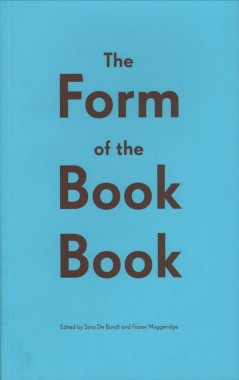
Sara De Bondt and Fraser Muggeridge, The Form of the Book Book
Softcover, 96 pp., offset 2/1, 140 x 230 mm
Second edition
ISBN 978-0-9562605-7-4
Published by Occasional Papers
$22.00 · out of stock
A collection of essays on book design by Catherine de Smet, James Goggin, Jenni Eneqvist, Roland Früh, Corina Neuenschwander, Sarah Gottlieb, Richard Hollis, Chrissie Charlton, Armand Mevis.
Armand Mevis, Calverts Printers, Catherine de Smet, Chrissie Charlton, Corina Neuenschwander, Criticism, Distribution, Fraser Muggeridge, James Goggin Jenni Eneqvist, Occasional Papers, Richard Hollis, Roland Früh, Sara De Bondt, Sarah Gottlieb, Typography
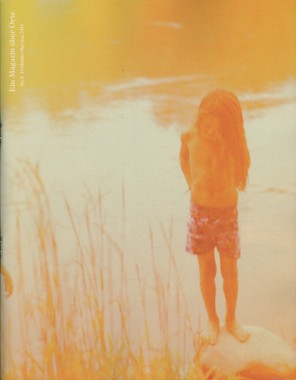
Ein Magazin über Orte 8, Paradise
Softcover, 84 pp., offset 4/4, 210 x 270 mm
Edition of 1000
ISSN 1866-2331
Published by Ein Magazin über Orte
$18.00 ·
Ein Magazin über Orte (A magazine about places) is published twice a year. It deals with a different location in every issue. The magazine collects works of various authors in the form of photographs, drawings and texts.
Agi Mishol, Art, Bela Pablo Janssen, Birgit Vogel, Brian Currid, Bruno Kurru, Bushra Rehman, Criticism, Culture, David Weiss, Distribution, Ein Magazin über Orte, Elmar Bambach, Gunter Kunert, Hans Magnus Enzensberger, Ibrahim Samuel, Jana Gontscharuk, Jeff Wall, John Copeland, Julia Marquardt, Kevin Coyne, Lidwien Van De Ven, Luc Tuymans, Marc Hieronimus, Marcus Oakley, Mark Borthwick, Michael Borremans, Mike Pare, Miranda July, Noor Damen, Peter Fischli, Photography, Raymond Meeks, Raymond Pettibon, Ryan McGinley, Theory, Wilhelm Werthern, Wolf Seiler, Zoe Leonard
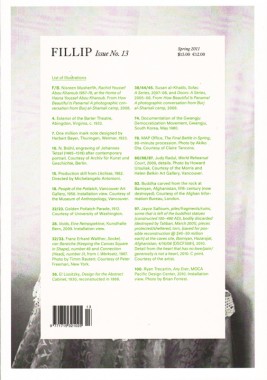
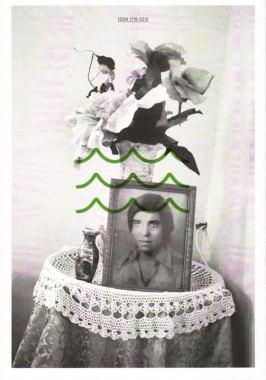
fillip 13, Intangible Economies
Softcover, 116 pp., offset 4/1, 170 x 245 mm
Edition of 2000
ISSN 1715-3212
Published by Fillip
$15.00 ·
Fillip 13 introduces
Intangible Economies, a new, ongoing series broadening the notion of economy beyond its financial dimensions. The series focuses on the multifarious forms of exchange fuelled by affect and desire, speculatively investigating the fundamental role these affective transactions play in modes of representation and, accordingly, in cultural production.
This issue includes series texts by Candice Hopkins, Jan Verwoert, and series editor Antonia Hirsch. Forthcoming installments will include contributions by Hadley+Maxwell, Olaf Nicolai, and Monika Szewczyk, among others.
The issue also features a record of The AAAARG Library, a site-specific installation commissioned for Fillip 13 and the 2010 NY Art Book Fair. The Library, produced by artist Sean Dockray and curated by Jeff Khonsary, will be presented again this summer as part of Night Market, a Red76 project for the Massachusetts Museum of Contemporary Art in North Adams, MA.
AAAARG Library, Anthony Downey, Antonia Hirsch, Art, Candice Hopkins, Carson Chan, Claire Tancons, Criticism, Distribution, Fillip, Hadley+Maxwell, Haema Sivanesan, Jan Verwoert, Jeff Khonsary, Jesse McKee, Kristina Lee Podesva, Lisa Marshall, Massachusetts Museum of Contemporary Art, Monika Szewczyk, Olaf Nicolai, Red76, Ryan Trecartin, Sean Dockray, Theory
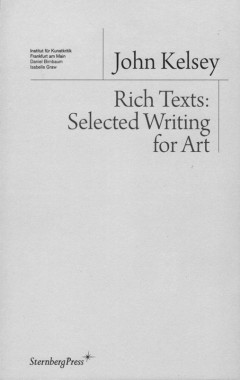
John Kelsey, Rich Texts: Selected Writing for Art
Softcover, 248 pp., offset 2/1, 120 x 190 mm
Edition of 2000
ISBN 978-1-934105-23-8
Published by Sternberg Press
$20.00 · out of stock
Compiled for the first time here, essays by American critic, artist, gallerist and dealer John Kelsey convey some of the most poignant challenges in the art world and in the many social roles it creates. “When the critic chooses to become a smuggler, a hack, a cook, or an artist,” Kelsey said, “it’s maybe because criticism as such remains tied to an outmoded social relation.” Kelsey’s “rich texts” play the double role of explaining the art world and actively participating in it; they close the distance between the work of art and how we talk about it. These playful, elegant writings — many originally published in Artforum — embody a timelessness that strikes at the core of the contemporary art world. The newest edition from the terrific Institut fur Kunstkritik series.
Criticism, Daniel Birnbaum, Isabelle Graw, John Kelsey, Markus Weisbeck, Matthew Evans, Miriam Rech, RAM, Sternberg Press, Theory
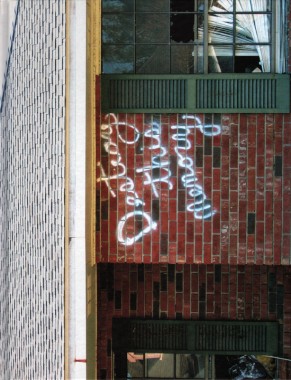
Richard Misrach, Destroy This Memory
Hardcover, 140 pp., offset 4/4, 11.75 x 15.25 inches
Edition of 2000
ISBN 978-15971116-3-8
Published by Aperture
$65.00 ·
Richard Misrach’s
Destroy This Memory is an affecting reminder of the physical and psychological impact of Hurricane Katrina. Rather than simply surveying the damage, Misrach — who has photographed the region regularly since the 1970s, most notably for his ongoing
Cancer Alley project — found himself drawn to the hurricane-inspired graffiti: messages scrawled in spray paint, crayons, chalk, or whatever materials happened to be on hand. At turns threatening, desperate, clinical, and even darkly humorous, the phrases he captured — the only text that appears in the book — offer unique and revealing human perspectives on the devastation and shock left in the wake of this disaster.
Destroy This Memory presents previously unpublished and starkly compelling material, all of which Misrach shot with his 4 MP pocket camera. Created between October and December 2005, this haunting series of images serves as a potent, unalloyed document of the raw experiences of those left to fend for themselves in the aftermath of Katrina.
Aperture, Art, Cancer Alley, Criticism, DAP, Katrina, New Orleans, Photography, Politics, Richard Misrach
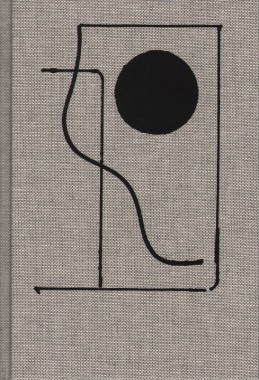
Boris Groys and Andro Wekua, Wait to Wait
Hardcover, 160 pp., offset 4/1, 135 x 196 mm
English and German
Edition of 2000
ISBN 978-3-03764-021-0
Published by JRP|Ringier, CK editions
$28.00 ·
An
unequal pair from the ranks of philosophy and contemporary art were brought to the table for debate. The celebrated Russian philosopher Boris Groys, and the young international artist from Georgia Andro Wekua, discussed their shared experiences in the Soviet system, the conditions governing production in contemporary art today, and the sensitivities of a generation of artists born in the 1970s, taking Wekua’s two large installations
Wait to Wait and
Get Out of My Room as examples.
Phenomena such as loneliness, doubles, repetitions, mirror images, and waiting are the central themes of this conversation, illustrated by pictures of the two installations and several collages by Wekua.
Andro Wekua, Art, Boris Groys, Christoph Keller, CK editions, Criticism, DAP, Galerie Peter Kilchmann, Gladstone Gallery, Interviews, JRP|Ringier, Philosophy, Theory












































